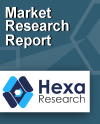
U.S. Online Dietary Supplement Market Size and Forecast by Type (Nutrition Products, Dietary, Herbal, Others) and Trend Analysis, 2015 - 2025
- Published: April, 2018
- Format: Electronic (PDF)
- Number of pages: 50
- Industry: Nutraceuticals & Functional Foods
Table of Contents
Chapter 1. Executive Summary
Chapter 2. Methodology and Scope
2.1. Research methodology
2.2. Assumptions
2.3. List of data sources
Chapter 3. Introduction
3.1. Research scope & market segmentation
Chapter 4. U.S. Online Dietary Supplements Market Trends: Drivers & Opportunities
4.1. Introduction
4.2. Key industry trends
4.2.1. Market drivers
4.2.2. Market Restraints
4.3. Porter's Five Forces analysis
4.4. Supply chain analysis
Chapter 5. U.S. Online Dietary Supplements Market, By Type
5.1. U.S. online dietary supplements movement, by -type, 2017 & 2025
5.1.1. Nutrition Products
5.1.1.1. Market estimates and forecast, 2015 - 2025 (USD Billion)
5.1.2. Dietary Supplements
5.1.2.1. Market estimates and forecast, 2015 - 2025 (USD Billion)
5.1.3. Herbal Supplements
5.1.3.1. Market estimates and forecast, 2015 - 2025 (USD Billion)
5.1.4. Others
5.1.4.1. Market estimates and forecast, 2015 - 2025 (USD Billion)
Chapter 6. Competitive Landscape
6.1. Company Market Share, 2017
6.2. Strategic framework
6.3. Company profiles
6.3.1. Amazon
6.3.1.1. Company Overview
6.3.1.2. Product Benchmarking
6.3.1.3. Financial Performance
6.3.1.4. Recent Initiatives
6.3.2. Bodybuilding.com
6.3.2.1. Company Overview
6.3.2.2. Product Benchmarking
6.3.2.3. Financial Performance
6.3.2.4. Recent Initiatives
6.3.3. Vitacost.com
6.3.3.1. Company Overview
6.3.3.2. Product Benchmarking
6.3.3.3. Financial Performance
6.3.3.4. Recent Initiatives
6.3.4. iHerb.com
6.3.4.1. Company Overview
6.3.4.2. Product Benchmarking
6.3.4.3. Financial Performance
6.3.4.4. Recent Initiatives
6.3.5. Vitamin World
6.3.5.1. Company Overview
6.3.5.2. Product Benchmarking
6.3.5.3. Financial Performance
6.3.5.4. Recent Initiatives
Choose License Type
Research Assistance
Steve Cooper
Research Support Specialist, USA
steve@hexaresearch.com
- Phone: +1-408-342-1548
- Toll Free: +1-800-489-3075
- Email: sales@hexaresearch.com
- World's largest premium report database
- Transparent pre & post sale customer engagement model
- Unparalleled flexibility in terms of rendering services
- Safe & secure web experience
- 24*5 Research support service
